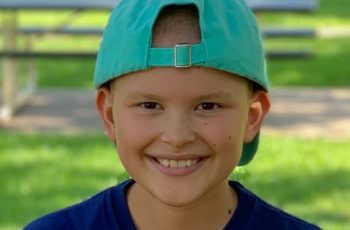Ewing Sarcoma
What is Ewing sarcoma?
Ewing sarcoma is a cancerous tumor that grows in the bones or tissue around the bones, often the legs, pelvis, ribs, arms, or spine. It can spread to the lungs, bones, and bone marrow.
What causes Ewing sarcoma? Who is affected?
The causes of Ewing sarcoma are unknown. The development of the tumor appears to be related to periods of life with rapid bone growth and may be due to an increased vulnerability of rapidly growing cells.
About 200 children and young adults are diagnosed with Ewing sarcoma in the U.S. each year.
About half of Ewing sarcoma tumors occur between ages 10 and 20.
This type of cancer affects slightly more boys than girls.
It is rarely found in individuals of African or Asian descent.
What are the symptoms of Ewing sarcoma?
Children with Ewing sarcoma may experience swelling or soreness around the tumor area which is commonly mistaken for a sports injury or bumps and bruises. Other symptoms may include a low fever (sometimes mistaken as an infection), bone pain especially if it worsens during exercise or at night, and limping.
How is Ewing sarcoma treated?
Chemotherapy is usually the first step to treating Ewing sarcoma to kill cancer cells or stop them from growing. Surgery may be done in several weeks or months after chemotherapy reduces the cancer to the point when surgery can be most effective. Sometimes surgeons will graft bone or tissue to replace the diseased bone and tissue that was removed. An artificial bone may be used. For some patients, amputation is required to completely remove the tumor. Radiation therapy is used to remove the remaining cancer cells.




